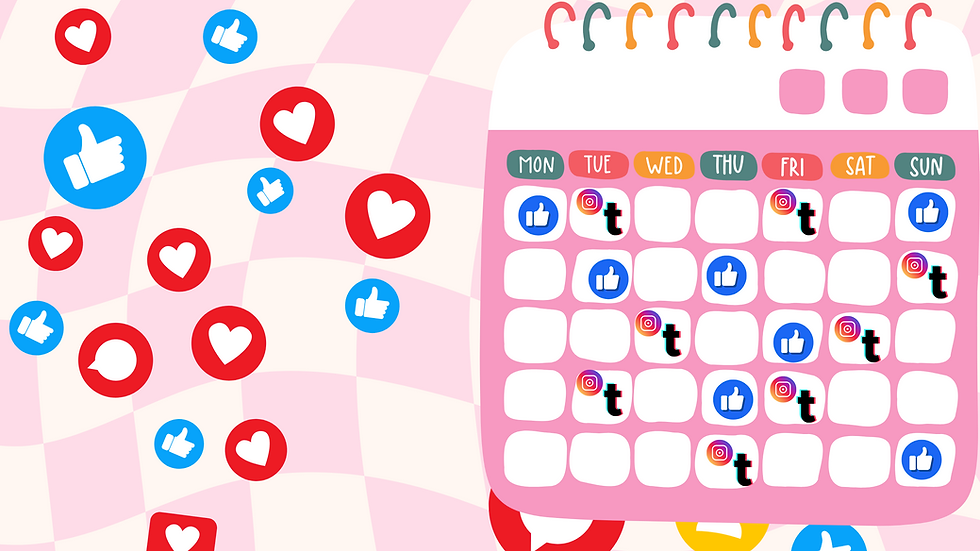How to Build a Content Calendar That Actually Works
- Jennifer Drey
- Aug 19
- 3 min read

Reduce burnout, stay consistent, and stay relevant
If your content strategy feels like a game of catch-up, it’s time to get organized. A strong content calendar keeps your brand consistent, your team aligned, and your creativity flowing without the panic. Here's how to build one that actually works—with tools, examples, and real-world tips to back it up.
1. Start With Strategy, Not Just Scheduling
Before you start plugging in post ideas, step back and define your goals. Are you trying to build brand awareness, generate leads, increase engagement, or boost sales? Knowing your “why” helps shape your “what.”
💡 Not sure where to start? This free social media strategy template from Hootsuite walks you through setting goals, identifying your audience, and tracking success.
2. Use Content Pillars to Stay Focused
Content pillars are recurring themes that help you stay on-brand while avoiding creative burnout. They give your calendar structure while still leaving room to experiment.
For example, a wellness coach might rotate between:
👉 Fitness tips 👉 Recipes 👉 Client wins 👉 Personal stories 👉 Educational myth busting
Need help finding yours? Try this Content Ideas Generator by CapCut to brainstorm topics based on your niche.
3. Pick a Posting Frequency You Can Actually Maintain
It’s better to post consistently 3x a week than burn out trying to post daily. Find a rhythm that works with your bandwidth and stick to it.
This plug-and-play Google Sheets content calendar is a great place to map out your weekly cadence by platform and content type.
4. Use a Visual Tool to Plan and Track
Whether you’re solo or managing a team, a visual content calendar makes your life 100x easier.
Some favorites include:
You can even build a calendar directly in Airtable with filters for platform, content type, and status (Idea → Draft → Scheduled → Posted).
5. Leave Room for Flexibility and Trends
Your calendar isn’t set in stone. Some of your best content will come from reacting in the moment, whether it’s hopping on a trend, responding to industry news, or sharing something spontaneous.
Tools like Trendspottr and TikTok’s “For You” discovery page help you catch rising trends early so you can react in real-time.
6. Analyze Monthly and Adjust
Don’t just plan; Review!
Set a time each month to look at performance. What’s driving traffic? What’s saving/sharing well? What felt off?
Use a tool like Miro’s Social Media Calendar & Analytics Template to map content and KPIs side by side for better decision-making.
TL;DR: What a Solid Content Calendar Gives You
✅ A clear path aligned with your goals ✅ Less stress and decision fatigue ✅ A consistent presence across platforms ✅ Flexibility for trends and creativity ✅ Real performance data to grow smarter
Final Thoughts 💭
A content calendar isn’t just a planning tool, it’s your creative safety net. It frees up mental space, helps you stay consistent, and gives your content purpose beyond just “posting to post.” Whether you’re a solo creator or managing a team, building a calendar that actually works means staying focused on your goals, being realistic about your time, and leaving room for experimentation. Start simple, stay flexible, and let the data guide you. The more intentional your calendar, the more impactful your content will be.



